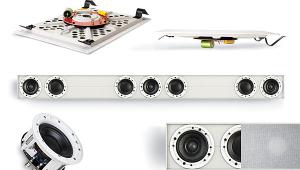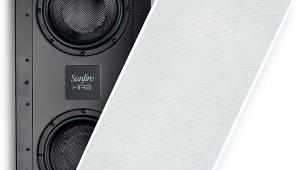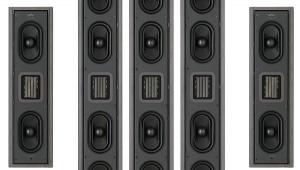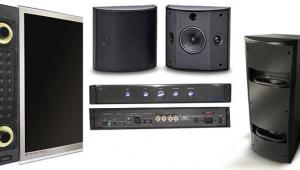BG Radia LA-550 In-Wall Speaker System
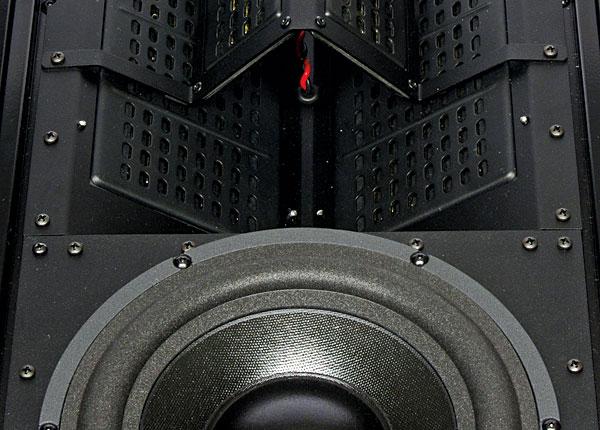
 Price: $17,800 At A Glance: Excellent clarity and transparency • Great system value • Awesome bass
Price: $17,800 At A Glance: Excellent clarity and transparency • Great system value • Awesome bass
Pure Magic
As a contributing writer for Home Theater magazine, I’m often the go-to guy for reviewing large in-wall speaker systems that other writers can’t or won’t review, usually for lack of adequate space. I have enough space, and I enjoy listening to new speakers, especially high-end types. It’s a lot of work and it disrupts an otherwise orderly living room, but I’m not complaining.
My latest assignment is a 5.1channel in-wall speaker system from BG Radia configured around the LA-550. This system, which came in at $17,800 as reviewed, is designed for custom home theaters, media rooms, even boardrooms and large presentation facilities and houses of worship. The speakers feature BG Radia’s proprietary planar magnetic drivers, which it refers to in its literature as “planar ribbons.” BG Radia is one of a small handful of American speaker manufacturers that design and produce planar magnetic drivers. Planar magnetics are outwardly similar to the more familiar ribbon drivers, which is probably why BG Radia uses that terminology in descibing its drivers. The distinction is that a ribbon diaphragm is made of electrically conductive material (metal), and the audio signal passes through the diaphragm itself. In a planar magnetic driver, the diaphragm is nonconductive (plastic), but a conductive grid of thin wires or circuit traces is bonded to it. The audio signal flows through the grid on the diaphragm, not through the diaphragm. Both driver types are well known and admired for their extraordinary detail and lifelike music reproduction. They’re not new; in fact, ribbon drivers have been around in various forms for more than 75 years, and planar magnetic drivers have been around for over 40 years. But recent generations have reached impressive new levels of performance and reliability.

Historically, planar magnetic drivers and ribbon speakers have been very expensive and difficult to integrate into a home environment. Improvements in performance and reliability have come from employing new materials and manufacturing techniques. With these improvements, BG Radia has brought prices more in line with those of mainstream home audio speakers. It seems that BG Radia may have broken some new ground. To find out, I tested the speakers in my home theater system.
The Holy Grail of Loudspeakers?
It’s safe to say that the perfect loudspeaker doesn’t exist, and perhaps it never will. But audiophiles who are fans of such designs consider ribbon, planar, and electrostatic speakers to be the next best thing. Specifically, planar magnetic drivers have three advantages. The first is low mass. As I mentioned earlier, a planar magnetic driver consists of a thin diaphragm or membrane with a conductive grid distributed over its surface. The diaphragm is located near powerful magnets, often neodymium. In the presence of an audio signal, these magnets interact with the field around the conductors on the diaphragm, making it move and generate sound. Compared with a cone speaker, the diaphragm in a planar magnetic driver has ultralow mass. This lets it accelerate and decelerate very quickly with minimal overshoot. This results in cleaner transient response, better transparency, and improved resolution of low-level sonic details. The sounds of string instruments and the human voice, among others, can sound starkly real when you listen on a quality system employing planar drivers.
The second advantage is that force is applied to a planar magnetic driver’s diaphragm more uniformly over its surface compared with a cone speaker. That can lead to less mechanical flexing and breakup over the operating range and therefore more piston-like motion. When the diaphragm is moving pistonically, it’s said to operate in a minimum phase condition. To many listeners, this produces an unmistakable sense of clarity and coherency.
Last, most planar magnetic drivers operate as a line source that emits a cylindrically shaped sound wave. Such a wave has very wide horizontal dispersion and more tightly controlled vertical dispersion. This provides a wide listening area for home theater viewing, and the narrow vertical dispersion reduces floor and ceiling sound reflections. The dispersion characteristics are enhanced when these drivers are stacked in a vertical line-array configuration, as they are in the LA-550. This is one of the reasons that planar magnetic speakers are effective in home theaters and large facilities. The chances are good that the last time you attended a live music concert, the entertainment venue used line-array speakers, albeit probably not of the planar magnetic variety (although commercial versions exist). Are planar magnetic drivers the holy grail of speakers? We review, you decide. In my opinion, there’s no doubt that planar magnetic speakers are a huge step forward in sound quality and greatly advance the state of the art.
- Log in or register to post comments



